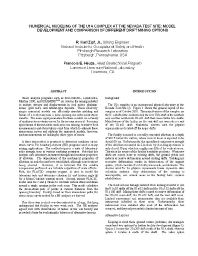 |
Stress analysis programs such as MULSIM/NL, LAMODEL, MinSim 2000, and ExamineTAB are used in the mining industry to analyze stresses and displacements in coal mines, platinum mines, gold reefs, and tabular-type deposits. These relatively simple numerical models can efficiently simulate yielding and failure of a rock mass near a mine opening and subsequent stress transfer. The main input parameters for these models are a family of nonlinear stress-strain curves for the in-seam material. For many applications of these models, such as in coal mining, extensive field measurements and observations exist from which to estimate these stress-strain curves and calibrate the numerical models; however, such measurements are lacking for other types of mines. A three-step method is presented to determine nonlinear stress-strain curves for boundary-element (BE) programs used in many mining applications. The method requires a suite of lab-scale strength tests at various confining pressures. Note that this analysis uses lab-measured strength and modulus properties of alluvium. The dependency of the mechanical properties of alluvium on scale has not been established, although more tests are being planned. However, it is believed that the relative comparisons performed are valuable regardless of scale effects. First, the FLAC2D computer program is used to model the lab tests and determine cohesion and friction angle for a Mohr-Coulomb material model. Second, another FLAC2D model uses the cohesion and friction angle values to calculate vertical stress and strain around a single opening in the rock mass. This model calculates the stress-strain path of points at various distances from the opening boundary. Finally, based on these stress-strain paths, the stress-strain curves needed for a BE analysis are derived. This three-step method was demonstrated in a large, flat-lying underground test facility in very weak rock. The BE analyses agreed well with observations of failure at the test facility and provided a basis for evaluating the behavior of alternative layouts.
| Author(s): | Zipf-RK, Heuze-FE |
| Reference: | 22nd Intl Conf on Ground Control in Mining. Morgantown, WV: West Virginia University, 2003 Aug; :308-317 |
nmotu (PDF, 810 KB)